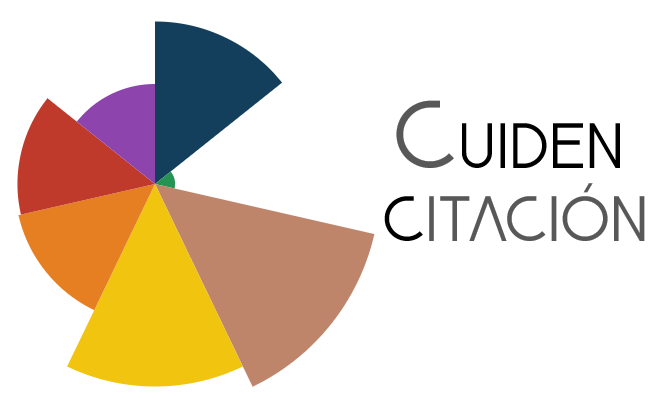Perfil clínico-epidemiológico de pacientes cirúrgicos com ressecamento ocular e risco de ressecamento ocular
DOI:
https://doi.org/10.15253/2175-6783.20202142370Palavras-chave:
Terminologia Padronizada em Enfermagem; Diagnóstico de Enfermagem; Processo de Enfermagem; Período Pós-Operatório; Síndromes do Olho Seco.Resumo
Objetivo: determinar o perfil clínico-epidemiológico de pacientes cirúrgicos com ressecamento ocular e com o diagnóstico de enfermagem Risco de ressecamento ocular, no período pós-operatório. Métodos: estudo transversal, com 82 pacientes em pós-operatório. Para análise, utilizaram-se as frequências, medidas do centro de distribuição e respectivas variabilidades. Resultados: prevalência equivalente entre o ressecamento ocular e o diagnóstico de enfermagem. A média de idade foi 57,7 anos para pacientes com ressecamento ocular e 59,6 anos para aqueles com o diagnóstico de risco. Em ambos os grupos, existiu predominância do sexo feminino, cirurgias cardiovasculares e uso de anestésico geral. O tempo de procedimento cirúrgico obteve mediana de 105 minutos para pacientes com ressecamento ocular e 67,5 minutos para aqueles com o diagnóstico de risco. Conclusão: predominância de mulheres em meia idade submetidas a cirurgias eletivas de motivos cardiovasculares para ambos os grupos, entretanto, com tempo de procedimento cirúrgico distinto.
Downloads
Referências
World Health Organization. World report on vision [Internet]. 2019 [cited Oct. 23, 2019]. Available from: https://www.who.int/publications-detail/world-report-on-vision
Craig JP, Nichols KK, Akpek EK, Caffery B, Dua HS, Joo CK, et al. TFOS Dews II definition and classification report. Ocul Surf. 2017; 15(3):276-283. doi: http://dx.doi.org/10.1016/j.jtos.2017.05.008
Pitombeira DO, Souza AML, Fernandes APNL, Araújo JNM, Silva AB, Vitor AF. Patients with dry eye admitted to an intensive care unit. Cogitare Enferm. 2018; 23(2):1-9. doi: http://dx.doi.org/10.5380/ce.v23i2.53081
Araújo JNM, Botarelli FR, Fernandes APNL, Oliveira-Kumakura ARS, Ferreira Junior MA, Vitor AF. Predictive clinical factors for ocular dryness in patients admitted to the Intensive Care Unit. Rev Esc Enferm USP. 2019; 53:e03493. doi: http://dx.doi.org/10.1590/S1980-220X2018036603493
Herdamn TH, Kamitsuru S. Diagnóstico de enfermagem da NANDA: definições e classificações 2018-2020. Porto Alegre: Artmed; 2018.
Araujo DD, Almeida NG, Silva PMA, Ribeiro NS, Werlli-Alvarenga, Chianca TCM. Prediction of risk and incidence of dry eye in critical patients. Rev Latino-Am Enfermagem. 2016; 24:e2689. doi: http://dx.doi.org/10.1590/1518-8345.0897.2689
Vandenbroucke JP, Elm EV, Altman DG, Gøtzsche PC, Mulrow CD, Pocock SJ, et al. Strengthening the Reporting of Observational Studies in Epidemiology (STROBE): Explanation and elaboration. Int J Surg. 2014; 12(12):1500-24. doi: https://doi.org/10.1016/j.ijsu.2014.07.014
Hulley SB, Cumminsgs SR, Browner WS, Grady DG, Newman TB. Delineando a pesquisa clínica. Porto Alegre: Artmed; 2015.
Jin X, Lin Z, Liu Y, Lin L, Zhu B. Hormone replacement therapy benefits meibomian gland dysfunction in perimenopausal women. Medicine. 2016; 95(31):1-6. doi: http://dx.doi.org/10.1097/MD.0000000000004268
Arita R, Morishige N, Fujii T, Fukuoka S, Chung JL, Seo KY, et al. Tear interferometric patterns reflect clinical tear dynamics in dry eye patients. Invest Ophthalmol Vis Sci. 2016; 57(8):3928-34. doi: http://dx.doi.org/10.1167/iovs.16-19788
Enekvist B, Johansson A. Pulse perfusion value predicts eye opening after sevoflurane anaesthesia: an explorative study. J Clin Monit Comput. 2015; 29(4):461-5. doi: http://dx.doi.org/10.1007/s10877-014-9623-1
Seo H, Yoo C, Lee T, Lin S, Kim YY. Head position and intraocular pressure in the lateral decubitus position. Optom Vis Sc. 2015; 92(1):95-101. doi: http://dx.doi.org/10.1097/OPX.0000000000000432
Aggarwal S, Goyal VK, Chaturvedi SK, Mathur V, Baj B, Kumar A. A comparative study between propofol and etomidate in patients under general anesthesia. Rev Bras Anestesiol. 2016; 66(3):237-241. doi: http://dx.doi.org/10.1016/j.bjane.2014.10.005
Busettinia C, Frölichb MA. Effects of mild to moderate sedation on saccadic eye movements. Behav Brain Res. 2014; 272(1):286-302. doi: http://dx.doi.org/10.1016/j.bbr.2014.07.012
Messmer EM. The pathophysiology, diagnosis, and treatment of Dry Eye disease. Dtsch Arztebl Int. 2015; 112(5):71-82. doi: http://dx.doi.org/10.3238/arztebl.2015.0071
Hert S, Moerman A. Sevoflurane. F1000Res. 2015; 25(4):1-9. doi: http://dx.doi.org/10.12688/f1000research.6288.1
Kim JH, Lee YC, Lee SI, Park SY, Choi SR, Lee JH, et al. Effective doses of cisatracurium in the adult and the elderly. Korean J Anesthesiol. 2016; 69(5):453-9. doi: http://dx.doi.org/10.4097/kjae.2016.69.5.453
Carey TW, Shaw KA, Weber ML, Devine JG. Effect of the degree of reverse Trendelenburg position on intraocular pressure during prone spine surgery: a randomized controlled trial. Spine J. 2014; 14(9):2118-26. doi: http://dx.doi.org/10.1016/j.spinee.2013.12.025
Downloads
Publicado
Como Citar
Edição
Seção
Licença
Copyright (c) 2020 Rev Rene

Este trabalho está licenciado sob uma licença Creative Commons Attribution 4.0 International License.









